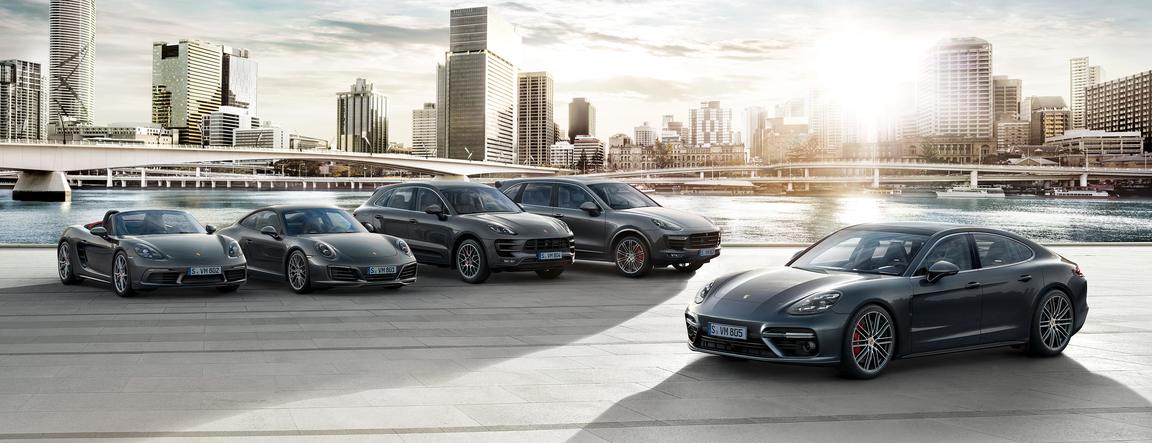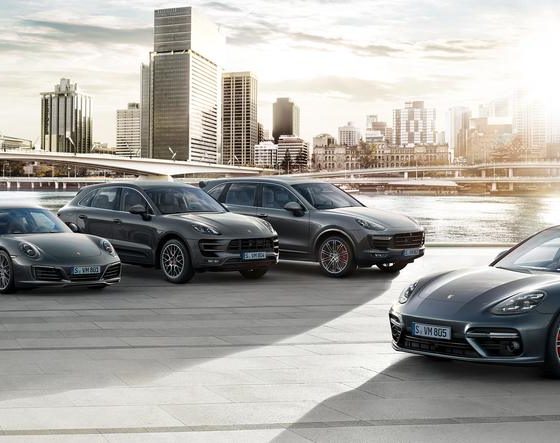

News
Porsche halts new vehicle sales in Europe to adjust to new emissions standards
Porsche has temporarily suspended the sale of new vehicles in Europe, due to the company’s current offerings not meeting the region’s new emissions standards. Buyers using Porsche’s online vehicle configurator for Europe were prompted with a message informing visitors that due to a “pending model revision,” vehicles under the company’s lineup are not available as freely configurable cars.
The reason behind the surprising halt to Porsche’s sales lies in Europe’s new Euro 6 emissions regulations, which are scheduled to be fully enforced come September. The new standards, consisting of the Worldwide Harmonized Light Vehicle Test Procedure (WLTP) and Real Driving Emissions (RDE), were imposed by the EU last September, according to a report from German news agency Frankfurter Allgemeine Zeitung.
After the announcement of the new standards last September, regulators allowed manufacturers such as Porsche to sell cars that were certified with the 1997-era New European Driving Cycle (NEDC) for another year. These are the vehicles that Porsche is currently rushing to deliver before the September deadline. Porsche vehicles that are fully compliant with the new emissions standards, such as the Cayenne and the Panamera, are expected to be unavailable until around March 2019.
It’s not just Porsche that has been hit with Europe’s new emissions standards. According to the German publication, legacy automakers BMW and Volkswagen have also halted the sale of some of their offerings. BMW, for one, has stopped the sale of the BMW 7-Series, BMW X5, and the BMW M3. While Porsche has halted the sale of new vehicles in Europe, however, the company continues to allow buyers in North America and Asia to order and configure new cars.
Porsche has arguably begun an earnest embrace of electric car technology. Its highly anticipated Mission E sedan — a vehicle seen as a potential rival to the best-selling Tesla Model S — is expected to hit the market sometime next year. The Mission E has Tesla Model S-rivaling specs, including a 0-60 mph time of 3.5 seconds, a range of 310 miles, and a maximum speed of 155 mph.
Just recently, a prototype of the Mission E sedan was taken around the track by former Formula One driver Mark Webber. During his brief test drive of the electric car, Webber noted that the Mission E had noticeable similarities to the Porsche 919 Hybrid, a hybrid sports-prototype racing car that he drove to compete in endurance races such as the FIA World Endurance Championship and the 24 Hours of Le Mans.
Porsche is not just developing one electric car, however. Earlier this year at the Geneva Motor Show, the German legacy automaker also unveiled the Mission E Cross Turismo, a more rugged variant of its four-door sedan. During its unveiling, Porsche noted that the Mission E Cross Turismo would hit the market early next decade.
The German automaker is also laying the foundations of a charging network for its electric cars. Dubbed the IONITY Network, Porsche’s ultra-fast chargers are designed to have an output of 350 kW, far beyond the ~140 kW max output of Tesla’s Superchargers.
During Tesla’s Q1 2018 earnings call, however, Tesla CEO Elon Musk and CTO JB Straubel noted that Porsche’s 350 kW electric car chargers would likely “frag” the battery and not be beneficial to drivers. Thus, according to Musk, Tesla’s Supercharger V3 network would feature an output of around 200-250 kW.

News
Tesla FSD fleet is nearing 7 billion total miles, including 2.5 billion city miles
As can be seen on Tesla’s official FSD webpage, vehicles equipped with the system have now navigated over 6.99 billion miles.

Tesla’s Full Self-Driving (Supervised) fleet is closing in on almost 7 billion total miles driven, as per data posted by the company on its official FSD webpage.
These figures hint at the massive scale of data fueling Tesla’s rapid FSD improvements, which have been quite notable as of late.
FSD mileage milestones
As can be seen on Tesla’s official FSD webpage, vehicles equipped with the system have now navigated over 6.99 billion miles. Tesla owner and avid FSD tester Whole Mars Catalog also shared a screenshot indicating that from the nearly 7 billion miles traveled by the FSD fleet, more than 2.5 billion miles were driven inside cities.
City miles are particularly valuable for complex urban scenarios like unprotected turns, pedestrian interactions, and traffic lights. This is also the difference-maker for FSD, as only complex solutions, such as Waymo’s self-driving taxis, operate similarly on inner-city streets. And even then, incidents such as the San Francisco blackouts have proven challenging for sensor-rich vehicles like Waymos.
Tesla’s data edge
Tesla has a number of advantages in the autonomous vehicle sector, one of which is the size of its fleet and the number of vehicles training FSD on real-world roads. Tesla’s nearly 7 billion FSD miles then allow the company to roll out updates that make its vehicles behave like they are being driven by experienced drivers, even if they are operating on their own.
So notable are Tesla’s improvements to FSD that NVIDIA Director of Robotics Jim Fan, after experiencing FSD v14, noted that the system is the first AI that passes what he described as a “Physical Turing Test.”
“Despite knowing exactly how robot learning works, I still find it magical watching the steering wheel turn by itself. First it feels surreal, next it becomes routine. Then, like the smartphone, taking it away actively hurts. This is how humanity gets rewired and glued to god-like technologies,” Fan wrote in a post on X.
News
Tesla starts showing how FSD will change lives in Europe
Local officials tested the system on narrow country roads and were impressed by FSD’s smooth, human-like driving, with some calling the service a game-changer for everyday life in areas that are far from urban centers.

Tesla has launched Europe’s first public shuttle service using Full Self-Driving (Supervised) in the rural Eifelkreis Bitburg-Prüm region of Germany, demonstrating how the technology can restore independence and mobility for people who struggle with limited transport options.
Local officials tested the system on narrow country roads and were impressed by FSD’s smooth, human-like driving, with some calling the service a game-changer for everyday life in areas that are far from urban centers.
Officials see real impact on rural residents
Arzfeld Mayor Johannes Kuhl and District Administrator Andreas Kruppert personally tested the Tesla shuttle service. This allowed them to see just how well FSD navigated winding lanes and rural roads confidently. Kruppert said, “Autonomous driving sounds like science fiction to many, but we simply see here that it works totally well in rural regions too.” Kuhl, for his part, also noted that FSD “feels like a very experienced driver.”
The pilot complements the area’s “Citizen Bus” program, which provides on-demand rides for elderly residents who can no longer drive themselves. Tesla Europe shared a video of a demonstration of the service, highlighting how FSD gives people their freedom back, even in places where public transport is not as prevalent.
What the Ministry for Economic Affairs and Transport says
Rhineland-Palatinate’s Minister Daniela Schmitt supported the project, praising the collaboration that made this “first of its kind in Europe” possible. As per the ministry, the rural rollout for the service shows FSD’s potential beyond major cities, and it delivers tangible benefits like grocery runs, doctor visits, and social connections for isolated residents.
“Reliable and flexible mobility is especially vital in rural areas. With the launch of a shuttle service using self-driving vehicles (FSD supervised) by Tesla in the Eifelkreis Bitburg-Prüm, an innovative pilot project is now getting underway that complements local community bus services. It is the first project of its kind in Europe.
“The result is a real gain for rural mobility: greater accessibility, more flexibility and tangible benefits for everyday life. A strong signal for innovation, cooperation and future-oriented mobility beyond urban centers,” the ministry wrote in a LinkedIn post.
News
Tesla China quietly posts Robotaxi-related job listing
Tesla China is currently seeking a Low Voltage Electrical Engineer to work on circuit board design for the company’s autonomous vehicles.

Tesla has posted a new job listing in Shanghai explicitly tied to its Robotaxi program, fueling speculation that the company is preparing to launch its dedicated autonomous ride-hailing service in China.
As noted in the listing, Tesla China is currently seeking a Low Voltage Electrical Engineer to work on circuit board design for the company’s autonomous vehicles.
Robotaxi-specific role
The listing, which was shared on social media platform X by industry watcher @tslaming, suggested that Tesla China is looking to fill the role urgently. The job listing itself specifically mentions that the person hired for the role will be working on the Low Voltage Hardware team, which would design the circuit boards that would serve as the nervous system of the Robotaxi.
Key tasks for the role, as indicated in the job listing, include collaboration with PCB layout, firmware, mechanical, program management, and validation teams, among other responsibilities. The role is based in Shanghai.
China Robotaxi launch
China represents a massive potential market for robotaxis, with its dense urban centers and supportive policies in select cities. Tesla has limited permission to roll out FSD in the country, though despite this, its vehicles have been hailed as among the best in the market when it comes to autonomous features. So far, at least, it appears that China supports Tesla’s FSD and Robotaxi rollout.
This was hinted at in November, when Tesla brought the Cybercab to the 8th China International Import Expo (CIIE) in Shanghai, marking the first time that the autonomous two-seater was brought to the Asia-Pacific region. The vehicle, despite not having a release date in China, received a significant amount of interest among the event’s attendees.









